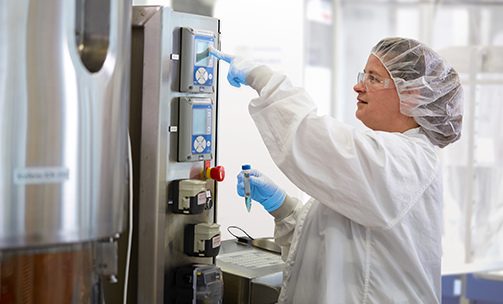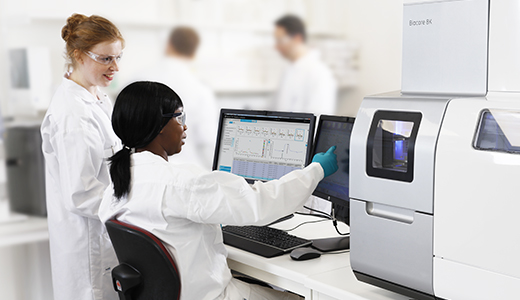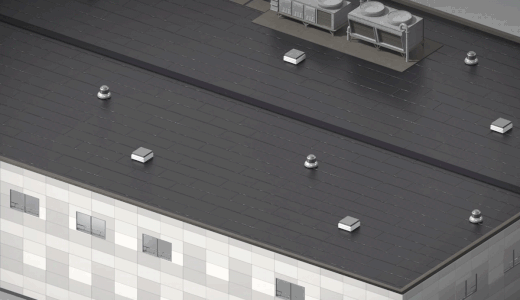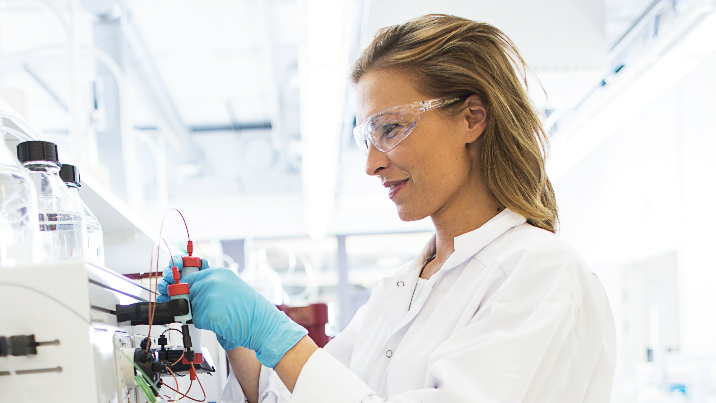| Topic | Resource | Description |
| Product development | Article: Accelerated manufacturing of subunit vaccines for a rapid pandemic response | To support the United States government mission to protect the United States and its military personnel by quickly responding to novel threats, scientists from Cytiva's Fast Trak Services and a team of partners worked with the US Department of Defense to develop a platform for rapid manufacturing of critical protein-based therapeutics that are essential for the military. |
| Product development | Article: Utilizing external collaboration to accelerate vaccine development | One of the most consistent demands for any project is development speed. Janssen Biotherapeutics Development successfully utilized an external collaboration approach to accelerate the process development and production of an HIV vaccine booster. This was essential to reduce both risk and the time needed for delivery of clinical supplies. |
| Product development | Application note: Accelerate flavivirus vaccine production with modern bioprocess tools and solutions | For a more efficient response to market needs, cell-based vaccine production has become an industry necessity. Technological challenges can dominate vaccine production. An overview of modern products and services that can help solve many challenges is discussed. |
| Topic | Resource | Description |
| Upstream processing | Application note: Adenovirus production in single-use ReadyToProcess WAVE 25 bioreactor system | Robust production of adenovirus demonstrated in HEK293 suspension cells grown in CDM4HEK293 medium using the ReadyToProcess WAVE 25 bioreactor system. Similar cell growth and productivity was achieved in three bioreactor runs, indicating process robustness. |
| Upstream processing | Application note: Adenovirus production in single-use Xcellerex XDR-10 bioreactor system | Production of adenovirus demonstrated in HEK293 cells cultured in HyClone CDM4HEK293 culture medium. Scale-up production of adenovirus in single-use XDR-10 bioreactors is shown to have culture performance comparable to shake flasks, indicating a robust and scalable adenovirus production process. |
| Upstream processing | Application note: Evaluation of HEK293 cell growth and adenovirus productivity in HyClone CDM4HEK293 medium | Growth and adenovirus productivity demonstrated in HEK293 cells grown in shake flasks in CDM4HEK293 medium or in a reference medium. The results show improved cell growth and infectious virus productivity in CDM4HEK293 medium as compared with the reference medium. Scalability of the CDM4HEK293 cultures was demonstrated with cultures grown in an XDR-10 bioreactor system. The results show similar performance between the culture systems, confirming the suitability of using CDM4HEK293 as a platform medium for HEK293 cell culture applications. |
| Process | Webinar: Optimizing the workflow for therapeutic viral vectors – upstream and downstream | On-demand webinar with industry leaders which discusses key challenges with viral vector production and identifies major bottleneck steps. |
| Process | Video series: Viral vectors | In this tutorial series on viral vector production, insights on virus production and how to scale up and tackle viral vector manufacturing challenges are shared. |
| Process | Article: Manufacturing of viral vectors | Robust and cost-effective scale up of viral vector processes is key. This case study is based on adenovirus and the results show a cost-efficient production at all investigated scales and scenarios, making it feasible for industrial production of adenovirus. |
| Downstream processing | Application note: Downstream scale-up purification of influenza virus using single-use bioprocessing equipment | Purification of influenza virus using single-use bioprocessing technology is described. Total process time for the downstream purification was 3 days and the overall scale-up process resulted in production of influenza virus with the same yield and purity as obtained in the laboratory scale. |
| Downstream processing | Article: Production of cell-based influenza vaccine | A case study which shows that single-use equipment can replace traditional equipment, including stainless steel bioreactors, user-packed chromatography columns, and ultracentrifuges, for the production of vaccines with high purity. |
| Topic | Resource | Description |
| Bioanalytics | White paper: Biacore systems in vaccine development and production | Biacore assays are successfully employed to design vaccines and adjuvants with desired properties, to speed up optimization of process parameters, and to perform batch release tests with great accuracy and precision. |
| Bioanalytics | Application note: Determination of adenovirus concentration using Biacore T200 | Infectious virus particle titer is traditionally determined by various cell based assays (e.g., TCID50) that can require more than a week until results. Two SPR based methods for adenovirus concentration determination are described using the Biacore T200 system, providing robust and reproducible results that correlate with estabilished methods, but with less assay and sample prep time. |
| Bioanalytics | Application note: Biacore biosensor assays for quantitation of influenza virus and HCP | The need for shorter development cycles has also increased the demand for improved analytical tools in vaccine production. Novel methods for quantitation of influenza virus and HCP using biosensor technology are described. |
| Bioanalytics | Video: Early-stage SPR assays for recombinant subunit vaccine discovery and process development | Sumana Chandramouli (GSK Vaccines) describes how SPR analysis using a panel of monoclonal antibodies that target key epitopes is used to give a comprehensive characterization of the most sensitive sites and properties of antigens. This allows critical quality attributes to be defined as candidates progress from the discovery phase into later stage development. |
| Bioanalytics | Video: SPR in early discovery and development of vaccine antigens | The need for novel and more complex vaccines puts increasing demands on the discovery, development and manufacturing pipelines. Markus Sack (Pro-SPR) describes a variety of SPR assays to tackle the development of a multi component malaria vaccine, including characterization of pathogen-specific antibodies from semi-immune volunteers in endemic regions and assessment of their immunogenicity. |
| Topic | Resource | Description |
| Scale-up and capacity | Article: Strategies to address the viral vector manufacturing shortage | The costs and complexities of manufacturing viral vectors, as well as the expertise it requires, have ultimately led to significant gaps in capacity to meet current demand. Options for modular manufacturing and single-use technologies that offer rapid scalable platforms are discussed. |
| Scale-up and capacity | Article: Evaluating the economics of today’s biomanufacturing strategies: Can you afford the cost of failure? | The decision to manufacture in-house or outsource production is unique to each business strategy. Weighing timelines, intellectual protection, and manufacturing staff capabilities along with standard OpEx and CapEx analysis is key to understanding the best path forward. We assessed one case study and offer an economic model to provide insights into essential elements of your analysis. |
| Scale-up and capacity | Webinar: A pragmatic approach to the buy vs. build manufacturing dilemma | A case study with ArmaGen discussing the buy vs. build financial model. Gain an appreciation of the critical elements in their business model. |
| Scale-up and capacity | Application note: Process economic simulation for scalable production of adenovirus | In this process economic simulation, the novel adenovirus production process is compared with a reference process, differing in choice of resins for the virus capture and polishing steps. In addition, single-use and stainless-steel process configurations were compared. |





